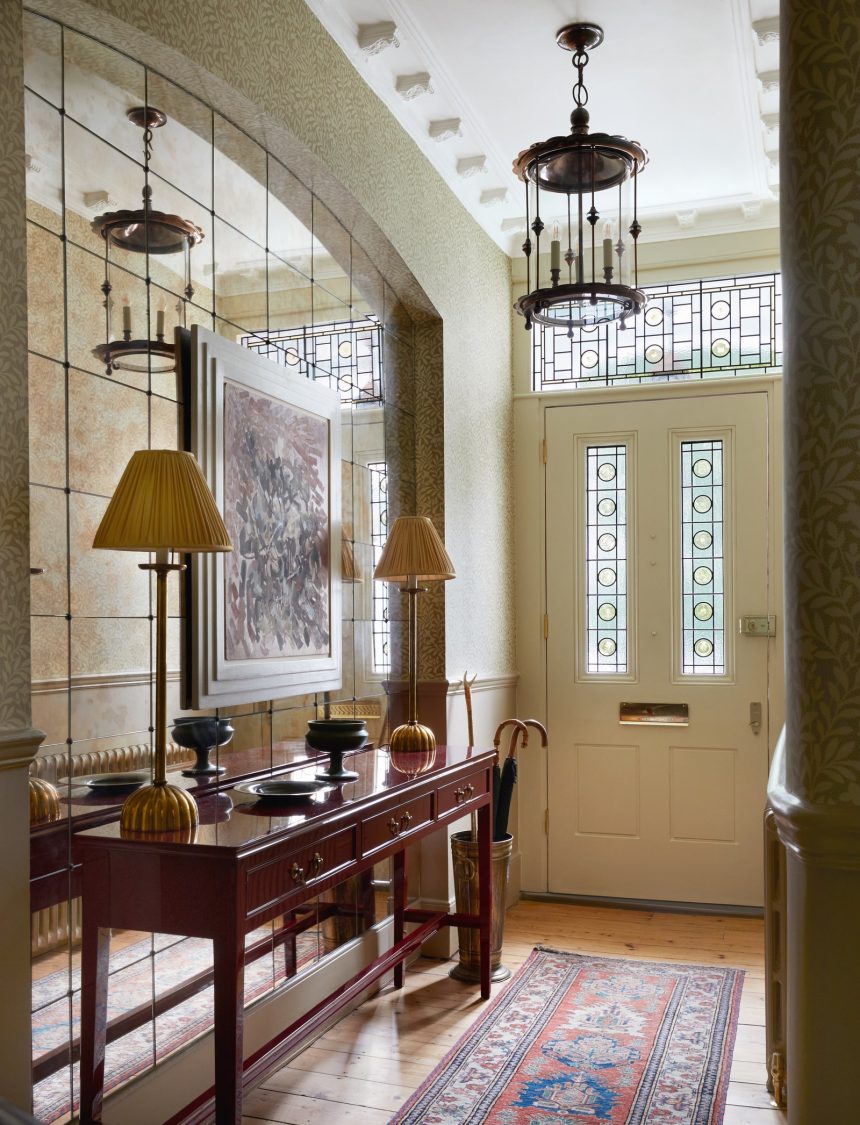Against this conventional floorplan, it is the decoration – a mosaic of textures, colours and eras – that sets the house squarely in the 21st century and avoids any ‘awkwardly Victorian references’, as Brandon puts it. The gleam of a 1970s sconce against fabric walls; a George III wardrobe, as glossy as maple syrup, perched on a knobbly jute carpet; the chequerboard carpet on the stairs, based on North African weaves, which links the floors like a slice of monochrome Battenberg cake – everything here encapsulates his knack for mixing styles and epochs.
He traces this to his early years. Growing up in Dallas, Texas, Brandon had a peripatetic childhood. ‘We moved a lot, as you do in the US,’ he says, explaining that every house was different. ‘One was a Spanish-style hacienda. The next, a quintessentially American clapboard with a white picket fence.’ This exposure to various styles was his introduction to art history. ‘I also learned what I like and what I don’t,’ he adds.
His legal training has proved surprisingly useful to a career in design: ‘It’s a very specific way of thinking, entirely based on facts and logic.’ And although, as he says, ‘there aren’t many written rules for design’, by studying historic interiors, joinery and upholstery, he has developed his own set of principles. ‘This guides my decision-making and creativity. It allows me to approach things with a rigour and consistency,’ he explains.
Brandon used those rules to design the joinery and furniture dotted around the house. In the main bedroom, a built-in wardrobe has the gravitas of a Georgian breakfront cabinet, but because the mouldings are streamlined, it feels modern. Both clients and designer liked a graceful bedside table by Danish designer Severin Hansen, but decided it was too low. Brandon’s more practical version is a homage to Hansen. The pastel-hued stained glass in the front door appears as though it could have been uncovered, twinkling like a diamond in the rough, in a reclamation yard. It is, in fact, brand new, its secessionist-style motifs based on an elaborate, early-19th-century porch that Brandon spotted in west London.








